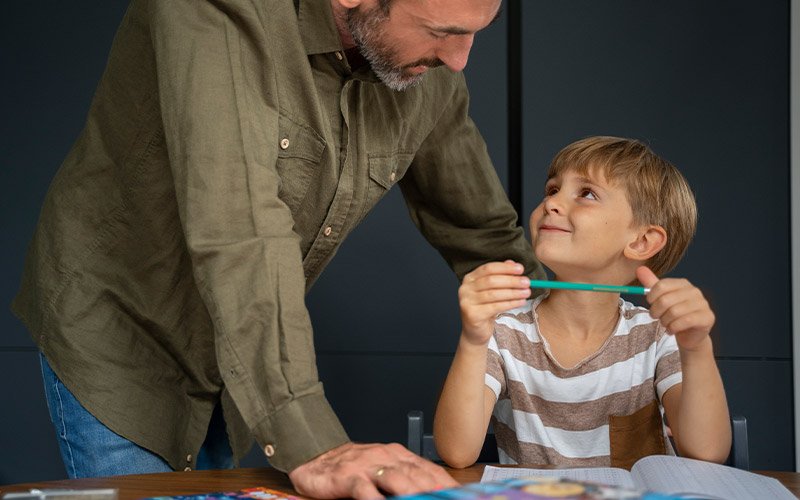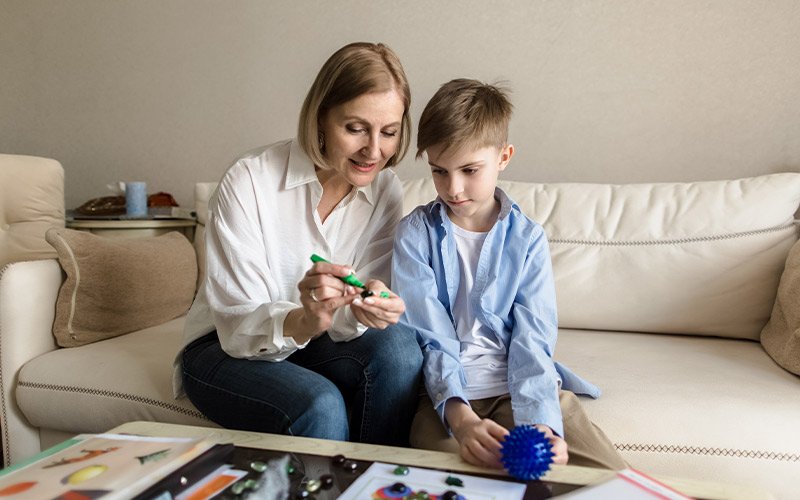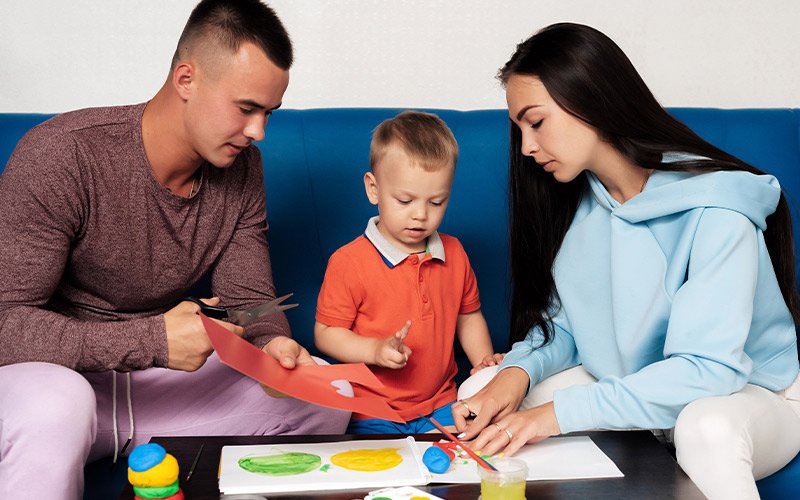When a child begins ABA therapy, it’s natural for parents to feel unsure about their role. Many wonder, “What do parents do during ABA therapy?” or “Am I doing enough?” These questions are valid—and reassuringly, there are clear answers. Parents are not just observers in this process. They are essential partners, playing a critical role in reinforcing progress and helping their child thrive.
ABA, or Applied Behavior Analysis, is most effective when families are actively involved. Studies consistently show that when parents participate in ABA sessions—either directly or by implementing strategies at home—their child’s outcomes improve significantly. According to the National Institute of Mental Health, a collaborative approach between therapists and families leads to stronger communication, better behavior regulation, and long-term skill retention. In other words, what parents do during ABA therapy truly matters.
Understanding ABA Therapy and Its Core Principles
ABA therapy is an evidence-based intervention that uses principles of learning theory to improve socially significant behaviors. It is often recommended for children with autism spectrum disorder (ASD), developmental delays, or behavioral challenges. Through structured interventions, children build critical skills in areas such as communication, social interaction, and daily living.
Whether provided in a clinic or through In-Home ABA Therapy, this approach is highly individualized. Goals are customized based on a child’s unique needs and learning style, and therapists frequently work with families to ensure these goals align with daily life.
What Do Parents Do During Applied Behavior Analysis ?

The Role of Parents Before, During, and After Sessions
1. Observe and Learn During Sessions
Parents are often invited to observe ABA sessions—especially at the start of treatment. Watching sessions in real time (or through video review, if available) helps families understand the therapist’s strategies and how they’re applied. This creates consistency between clinical interventions and the home environment.
During observations, parents learn:
- How behavior is reinforced
- What triggers or patterns to notice
- Techniques to prompt or redirect behavior
Even if parents aren’t present for every session, weekly check-ins with the therapist help maintain alignment.
2. Collaborate on Goal Setting
No one knows a child better than their parents. That’s why collaboration is central to ABA planning. Therapists conduct initial assessments but rely on parental insights to fully understand a child’s strengths, challenges, and routines.
Parents help answer questions like:
- What are daily struggles at home or school?
- Are there specific behaviors or skills they hope to improve?
- What motivates the child (toys, praise, snacks)?
This collaboration ensures therapy remains both relevant and realistic.
Reinforcing ABA Strategies at Home
3. Practice Generalization
ABA therapy doesn’t end when the session ends. One of the most important tasks parents do during ABA therapy is practicing learned behaviors in everyday settings. This is known as generalization—helping a child use new skills across different environments.
For example:
- If a child learns to request water in therapy, parents encourage the same request at home.
- If a child practices waiting their turn in a session, families reinforce turn-taking during playtime.
This kind of practice helps ensure that progress made in therapy sticks.
4. Track Progress and Provide Feedback
Parents are encouraged to share observations between sessions. Are new behaviors emerging? Are certain triggers leading to setbacks? By keeping therapists informed, families help shape the next phase of intervention.
Many clinics provide easy-to-use tracking tools or journals. Others use apps that allow quick updates on behavior or skill development. Either way, parental feedback is a vital part of data collection and decision-making.
Unique Strategies for Parents Supporting ABA Therapy

5. Establish Daily Routines
Children thrive on structure. Building predictable routines at home supports many of the goals targeted in ABA therapy. These routines don’t need to be rigid—but having consistent wake-up, meal, and bedtime routines creates a stable foundation for learning.
Tips for daily structure:
- Use visual schedules or checklists
- Keep transitions between activities clear
- Reinforce positive behavior consistently
6. Use Positive Reinforcement
One of the pillars of ABA is positive reinforcement—rewarding behaviors to increase their likelihood. Parents can use this approach by:
- Offering praise for small wins (“Great job asking for help!”)
- Using a token board or sticker chart
- Providing access to a favorite activity or snack as a reward
This technique is more effective than punishment and builds a child’s confidence.
Emotional Support and Self-Care for Parents
7. Managing Emotions and Expectations
ABA therapy can bring moments of hope—and frustration. It’s normal to feel overwhelmed, especially in the early stages. Emotional resilience is as important for parents as it is for children.
Suggestions for emotional support:
- Join a support group (many local clinics and online communities offer these)
- Talk to a therapist or counselor
- Practice self-compassion—progress takes time
According to a study published in Autism Research, parents who receive emotional support report better engagement with their child’s therapy and lower stress levels.
8. Mindfulness and Self-Regulation

Being emotionally grounded helps parents respond with patience and clarity. Mindfulness strategies like deep breathing, grounding exercises, or short meditations can help regulate stress—especially during challenging behaviors.
A simple technique:
- Take 3 slow breaths before responding to a meltdown
- Use affirmations like “I am calm and present”
- Model this for the child, too—it builds emotional intelligence
Working with a Multidisciplinary Team
ABA therapy often intersects with other supports. Parents may also be involved in speech therapy services, occupational therapy, or social skills groups. Open communication between all providers ensures consistency and maximizes progress.
Ask therapists:
- How can strategies from ABA and speech therapy align?
- Are there overlapping goals?
- Can sessions be coordinated or scheduled back-to-back?
This holistic approach can reduce overwhelm and create smoother routines for both child and family.
Long-Term Impact of Parental Involvement

What parents do during ABA therapy leaves a lasting imprint. Families who stay engaged often notice that their children:
- Gain independence faster
- Communicate more clearly
- Manage frustration better
- Adapt to school and community settings more smoothly
Parental involvement doesn’t need to be perfect—it just needs to be consistent. Being present, asking questions, and practicing daily strategies all add up to meaningful progress.
As the Behavior Analyst Certification Board emphasizes, caregiver involvement is a core component of ethical and effective ABA therapy.
Final Thoughts
Parents are not bystanders in ABA therapy. They are advocates, teachers, and emotional anchors. Through observation, reinforcement, collaboration, and care, families help translate therapy into life-long skills.
Clinics that offer ABA therapy services should always prioritize parent training, communication, and shared decision-making. When the entire family is supported, the child’s progress becomes sustainable.
For those beginning this journey, know that each moment of involvement matters. Progress may be gradual, but it is real—and it begins with showing up, asking questions, and staying committed.
